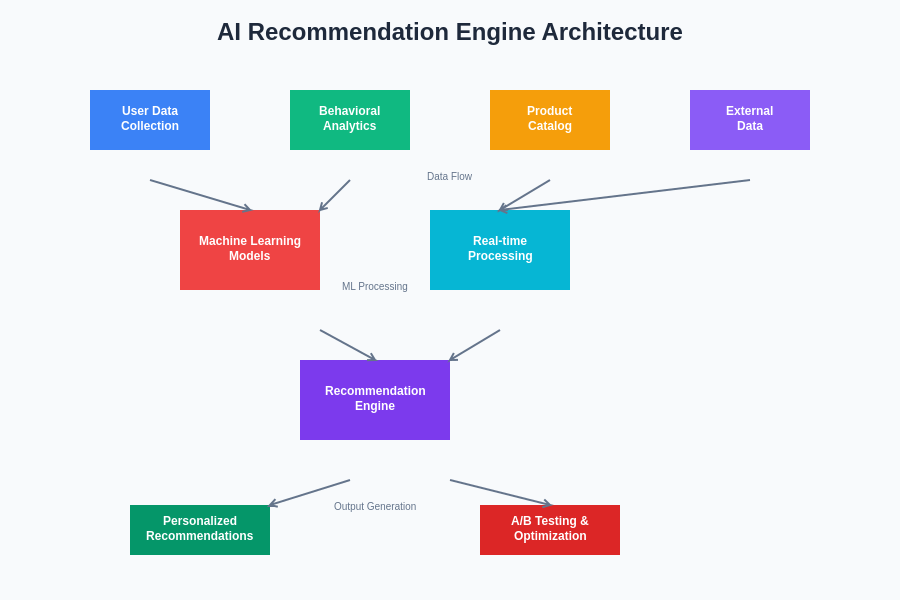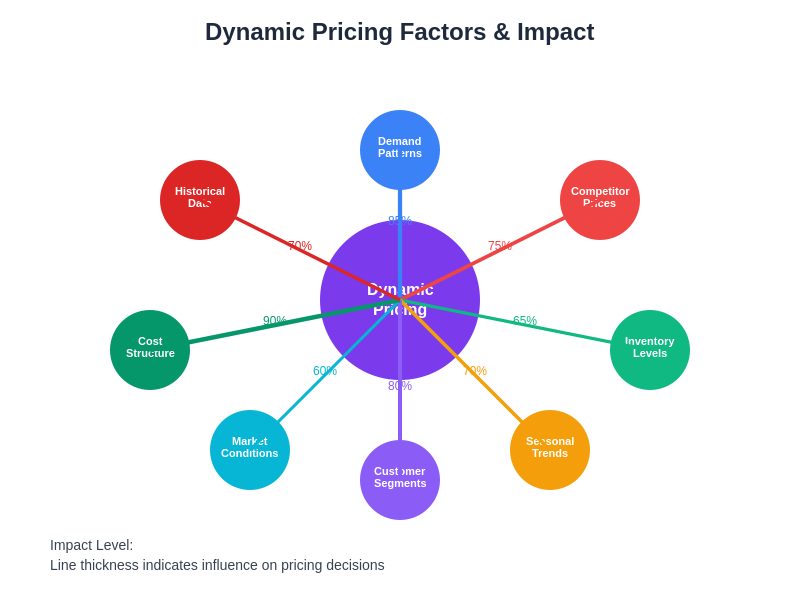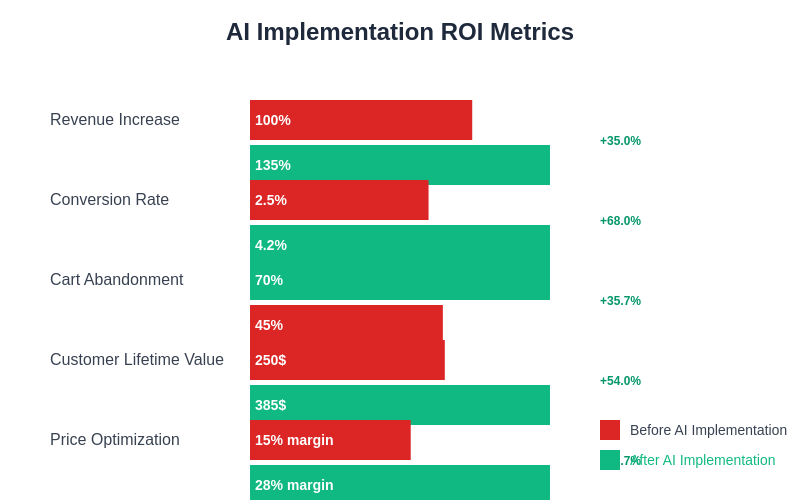The digital commerce landscape has been fundamentally transformed by artificial intelligence technologies that have redefined how businesses interact with customers and optimize their pricing strategies. At the heart of this transformation lie two critical AI applications that have become indispensable for modern e-commerce success: sophisticated recommendation engines that deliver personalized shopping experiences and dynamic pricing systems that optimize revenue through intelligent price adjustments. These technologies have evolved from experimental features to essential business infrastructure, driving unprecedented levels of customer engagement, conversion rates, and revenue optimization across the global e-commerce ecosystem.
Explore the latest AI trends transforming digital commerce to understand how cutting-edge technologies are reshaping online retail experiences and business models. The convergence of recommendation systems and dynamic pricing represents a paradigmatic shift toward data-driven commerce that adapts in real-time to market conditions, customer behavior patterns, and competitive landscapes, creating more efficient and profitable business operations while simultaneously enhancing customer satisfaction and loyalty.
The Evolution of AI-Powered Recommendation Systems
The journey from simple rule-based recommendation systems to sophisticated AI-powered engines represents one of the most significant technological advances in e-commerce history. Early recommendation systems relied on basic collaborative filtering techniques that suggested products based on purchasing patterns of similar customers, but these primitive approaches suffered from significant limitations including the cold start problem, scalability issues, and inability to capture complex user preferences. Modern AI recommendation engines have transcended these limitations by employing advanced machine learning algorithms, deep neural networks, and hybrid approaches that combine multiple recommendation techniques to deliver highly personalized and contextually relevant product suggestions.
Contemporary recommendation systems leverage vast amounts of data including browsing behavior, purchase history, demographic information, seasonal trends, social media activity, and real-time contextual factors such as device type, location, and time of day. These systems continuously learn and adapt to individual user preferences while simultaneously identifying broader market trends and product relationships that might not be immediately apparent through traditional analysis methods. The sophistication of modern recommendation engines extends beyond simple product suggestions to include personalized content curation, dynamic user interface customization, and predictive analytics that anticipate future customer needs before they are explicitly expressed.

The architectural complexity of modern recommendation systems demonstrates the sophisticated integration of multiple data sources, machine learning models, and real-time processing capabilities that enable personalized customer experiences at scale. This comprehensive approach ensures that recommendation engines can adapt to changing customer preferences while maintaining high performance and accuracy across diverse product catalogs and customer segments.
Understanding Dynamic Pricing Mechanisms
Dynamic pricing represents a revolutionary approach to revenue optimization that utilizes artificial intelligence to adjust product prices in real-time based on multiple market variables and business objectives. Unlike traditional fixed pricing models that remain static for extended periods, dynamic pricing systems continuously analyze market conditions, competitor pricing, inventory levels, demand patterns, customer segments, and seasonal fluctuations to determine optimal price points that maximize revenue while maintaining competitive positioning. This sophisticated approach to pricing strategy has enabled e-commerce businesses to capture maximum value from their inventory while responding rapidly to changing market dynamics.
The implementation of dynamic pricing systems requires sophisticated algorithmic frameworks that can process vast amounts of data from multiple sources and make pricing decisions within milliseconds. These systems must balance competing objectives including revenue maximization, inventory turnover, market share preservation, and customer satisfaction while operating within regulatory constraints and brand positioning guidelines. Advanced dynamic pricing engines incorporate machine learning models that continuously improve their pricing accuracy through feedback loops that measure the impact of price changes on sales performance, customer behavior, and overall business metrics.

The multifaceted nature of dynamic pricing demonstrates how artificial intelligence systems must simultaneously process and weigh numerous variables to optimize pricing decisions. Each factor contributes differently to the final pricing strategy, with demand patterns and cost structure typically having the highest impact on pricing algorithms, while market conditions and competitor analysis provide crucial contextual information for strategic positioning.
Harness the power of AI assistants like Claude to develop sophisticated algorithms and data analysis capabilities that can enhance your e-commerce AI implementations. The integration of advanced AI technologies enables businesses to create more nuanced and effective pricing strategies that adapt to complex market conditions while maintaining customer trust and brand integrity.
Collaborative Filtering and Content-Based Approaches
The foundation of modern recommendation systems rests on two primary methodological approaches that have been refined and enhanced through decades of research and practical implementation. Collaborative filtering techniques analyze user behavior patterns and preferences to identify similarities between customers and recommend products based on the purchasing decisions of users with similar tastes and preferences. This approach leverages the collective intelligence of the user base to surface relevant products that individual customers might not have discovered through traditional browsing methods, creating a social commerce dynamic that enhances product discovery and customer engagement.
Content-based recommendation approaches focus on analyzing product attributes, descriptions, categories, and features to suggest items that share characteristics with products that customers have previously viewed, purchased, or rated positively. These systems create detailed product profiles that capture both explicit features such as brand, price, and category, as well as implicit characteristics derived from customer interactions, reviews, and behavioral data. The combination of collaborative filtering and content-based approaches in hybrid recommendation systems creates more robust and accurate suggestion engines that can overcome the limitations of individual methodologies while providing more comprehensive coverage of the product catalog.
Machine Learning Algorithms in Recommendation Engines
The sophistication of modern recommendation engines stems from their utilization of advanced machine learning algorithms that can process complex data relationships and adapt to changing user preferences in real-time. Matrix factorization techniques decompose large user-item interaction matrices into lower-dimensional representations that capture latent factors influencing customer preferences, enabling the system to make accurate predictions about products that users are likely to enjoy. Deep learning approaches utilize neural networks with multiple hidden layers to model complex non-linear relationships between users, products, and contextual factors, creating more nuanced understanding of customer behavior patterns.
Reinforcement learning algorithms enable recommendation systems to optimize long-term customer engagement rather than focusing solely on immediate conversion metrics, creating more sustainable customer relationships through recommendations that consider the entire customer journey. These systems learn from user feedback, both explicit and implicit, to continuously refine their understanding of individual preferences while adapting to evolving market trends and product catalogs. The integration of natural language processing capabilities allows recommendation engines to analyze product reviews, descriptions, and customer feedback to enhance product understanding and improve recommendation accuracy.
Real-Time Personalization Strategies
The implementation of real-time personalization requires sophisticated technological infrastructure capable of processing user interactions and updating recommendations within milliseconds of customer actions. These systems must integrate multiple data streams including current browsing behavior, historical purchase patterns, seasonal trends, inventory levels, and promotional campaigns to deliver contextually relevant recommendations that reflect both individual preferences and current market conditions. Real-time personalization extends beyond product recommendations to include personalized pricing, customized user interfaces, targeted promotional offers, and dynamic content curation that adapts to individual customer characteristics and behaviors.
Advanced personalization systems utilize streaming data processing technologies and edge computing infrastructure to minimize latency while maximizing recommendation accuracy and relevance. These systems must balance the desire for highly personalized experiences with practical considerations including computational costs, data privacy requirements, and system scalability. The most effective personalization strategies combine real-time behavioral signals with longer-term preference models to create recommendations that are both immediately relevant and consistent with established customer tastes and preferences.
Leverage advanced AI research capabilities with Perplexity to stay informed about the latest developments in personalization algorithms and machine learning techniques that can enhance your recommendation system performance. The rapid evolution of AI technologies requires continuous learning and adaptation to maintain competitive advantage in the dynamic e-commerce landscape.
Price Optimization Through Machine Learning
Machine learning-powered price optimization represents a sophisticated approach to revenue management that goes far beyond traditional cost-plus or competitor-based pricing models. These systems analyze historical sales data, market conditions, customer behavior patterns, and external factors such as economic indicators, weather patterns, and social trends to identify optimal pricing strategies for different products, customer segments, and market conditions. Advanced pricing algorithms can simultaneously optimize multiple objectives including revenue maximization, inventory turnover, market share growth, and customer lifetime value while operating within business constraints and competitive positioning requirements.
The implementation of machine learning price optimization requires comprehensive data integration from multiple sources including sales transactions, customer interactions, competitor monitoring, supply chain information, and external market data. These systems utilize predictive modeling techniques to forecast demand at different price points, enabling businesses to identify pricing strategies that maximize revenue while maintaining optimal inventory levels. The sophistication of modern pricing systems extends to dynamic bundling strategies, personalized pricing offers, and promotional optimization that considers the complex interplay between different products, customer segments, and market conditions.
Competitive Intelligence and Market Analysis
Successful dynamic pricing strategies require comprehensive understanding of competitive landscapes and market dynamics that extend beyond simple price monitoring to include analysis of competitor strategies, market positioning, and customer perception. Advanced competitive intelligence systems utilize web scraping technologies, API integrations, and machine learning algorithms to continuously monitor competitor pricing, promotional activities, inventory levels, and customer reviews across multiple channels and platforms. This comprehensive market analysis enables businesses to make informed pricing decisions that consider not only immediate competitive responses but also longer-term strategic positioning and brand perception implications.
The integration of competitive intelligence into pricing systems requires sophisticated data processing capabilities that can handle large volumes of unstructured data from multiple sources while identifying relevant patterns and trends that impact pricing decisions. These systems must distinguish between temporary promotional activities and permanent pricing changes while considering the impact of different competitive responses on market dynamics and customer behavior. Advanced competitive intelligence platforms provide real-time alerts, trend analysis, and predictive modeling capabilities that enable businesses to proactively respond to competitive threats and market opportunities.
Customer Segmentation and Behavioral Analytics
Effective implementation of both recommendation engines and dynamic pricing systems requires sophisticated understanding of customer segments and behavioral patterns that goes beyond simple demographic categorizations to include psychographic profiling, purchase behavior analysis, and lifecycle stage identification. Advanced customer segmentation utilizes machine learning clustering algorithms to identify groups of customers with similar preferences, behaviors, and value characteristics, enabling more targeted and effective personalization strategies. These segmentation approaches consider multiple dimensions including purchase frequency, price sensitivity, brand loyalty, seasonal preferences, and channel utilization patterns.
Behavioral analytics platforms provide deep insights into customer journey patterns, conversion funnel performance, and engagement metrics that inform both recommendation and pricing strategies. These systems track customer interactions across multiple touchpoints and devices to create comprehensive customer profiles that capture both explicit preferences and implicit behavioral signals. The integration of behavioral analytics with recommendation and pricing systems enables more sophisticated personalization strategies that consider the full context of customer relationships rather than focusing solely on individual transactions or interactions.
Technology Infrastructure and Implementation
The successful deployment of AI-powered recommendation engines and dynamic pricing systems requires robust technological infrastructure capable of handling large-scale data processing, real-time decision making, and high-availability service delivery. Modern e-commerce platforms utilize cloud-based microservices architectures that enable scalable and flexible implementation of AI systems while maintaining system reliability and performance. These infrastructures must support real-time data streaming, machine learning model training and deployment, A/B testing frameworks, and comprehensive monitoring and analytics capabilities.
Implementation considerations include data integration challenges, model deployment strategies, performance optimization techniques, and failure recovery mechanisms that ensure continuous system operation even during peak traffic periods or technical disruptions. The complexity of modern AI systems requires sophisticated DevOps practices, continuous integration and deployment pipelines, and comprehensive testing frameworks that validate system performance across multiple dimensions including accuracy, latency, scalability, and reliability. Successful implementations also require careful attention to data privacy, security, and regulatory compliance requirements that vary across different markets and jurisdictions.
Measuring Success and Key Performance Indicators
The evaluation of AI-powered recommendation and pricing systems requires comprehensive measurement frameworks that capture both immediate performance metrics and longer-term business impact across multiple dimensions. Key performance indicators for recommendation engines include click-through rates, conversion rates, average order values, customer engagement metrics, and catalog coverage statistics that measure both the effectiveness and breadth of recommendation strategies. Advanced measurement approaches consider customer lifetime value impacts, cross-selling effectiveness, and long-term customer satisfaction metrics that capture the sustained business value of recommendation systems.
Dynamic pricing system evaluation requires analysis of revenue optimization, margin improvement, inventory turnover rates, market share impacts, and customer satisfaction metrics that measure the overall effectiveness of pricing strategies. Sophisticated measurement frameworks utilize statistical analysis techniques, causal inference methods, and long-term cohort analysis to isolate the impact of AI systems from other business factors while providing actionable insights for system optimization. The most effective measurement strategies combine automated monitoring systems with periodic business reviews that ensure AI systems continue to align with evolving business objectives and market conditions.

The return on investment from AI-powered e-commerce systems demonstrates substantial improvements across critical business metrics, with particularly notable gains in revenue generation, conversion optimization, and customer lifetime value enhancement. These quantitative results highlight the transformative potential of artificial intelligence in creating more efficient and profitable e-commerce operations while simultaneously improving customer experiences and satisfaction levels.
Ethical Considerations and Customer Trust
The implementation of AI-powered recommendation and pricing systems raises important ethical considerations regarding fairness, transparency, and customer trust that must be carefully addressed to maintain long-term business sustainability and regulatory compliance. Recommendation systems must avoid creating filter bubbles that limit customer exposure to diverse products while ensuring that algorithmic biases do not discriminate against particular customer groups or unfairly promote certain products. Dynamic pricing systems must balance revenue optimization with fair pricing practices that maintain customer trust and comply with applicable regulations regarding price discrimination and market manipulation.
Transparency considerations include providing customers with appropriate visibility into recommendation logic and pricing factors while protecting proprietary algorithms and competitive advantages. Privacy protection requires careful handling of customer data, implementation of appropriate consent mechanisms, and compliance with data protection regulations such as GDPR and CCPA. The most successful AI implementations build customer trust through clear communication about system capabilities, appropriate customer control mechanisms, and consistent delivery of value that clearly benefits customers rather than solely optimizing business metrics.
Future Trends and Technological Developments
The future evolution of e-commerce AI systems promises even more sophisticated capabilities that will further transform online retail experiences and business models. Emerging technologies including advanced natural language processing, computer vision, augmented reality integration, and IoT connectivity will enable more immersive and contextually aware recommendation experiences that consider broader lifestyle factors and real-world usage contexts. Next-generation pricing systems will incorporate more sophisticated external data sources including social media sentiment, economic indicators, and supply chain disruptions to create more responsive and accurate pricing strategies.
The integration of conversational AI interfaces will enable more natural and interactive recommendation experiences that allow customers to express complex preferences and receive personalized guidance throughout their shopping journey. Advanced personalization will extend beyond individual customers to consider household dynamics, social influences, and community trends that affect purchasing decisions. The continued advancement of edge computing and 5G connectivity will enable more responsive and sophisticated AI experiences while reducing latency and improving system performance across diverse geographic markets and customer segments.
The convergence of artificial intelligence, big data analytics, and advanced user experience design will continue to push the boundaries of what is possible in e-commerce personalization and optimization, creating new opportunities for businesses to differentiate themselves through superior customer experiences and more efficient operations. The companies that successfully navigate this technological evolution while maintaining ethical standards and customer trust will be best positioned to capture the significant business value that AI-powered commerce systems continue to deliver.
Disclaimer
This article is for informational purposes only and does not constitute professional business or technical advice. The implementation of AI-powered recommendation engines and dynamic pricing systems involves complex technical, legal, and ethical considerations that require careful analysis of specific business contexts and regulatory requirements. Readers should consult with qualified professionals and conduct thorough testing before implementing AI systems in production environments. The effectiveness and appropriateness of AI technologies may vary significantly based on industry, market conditions, customer base, and regulatory environment.
